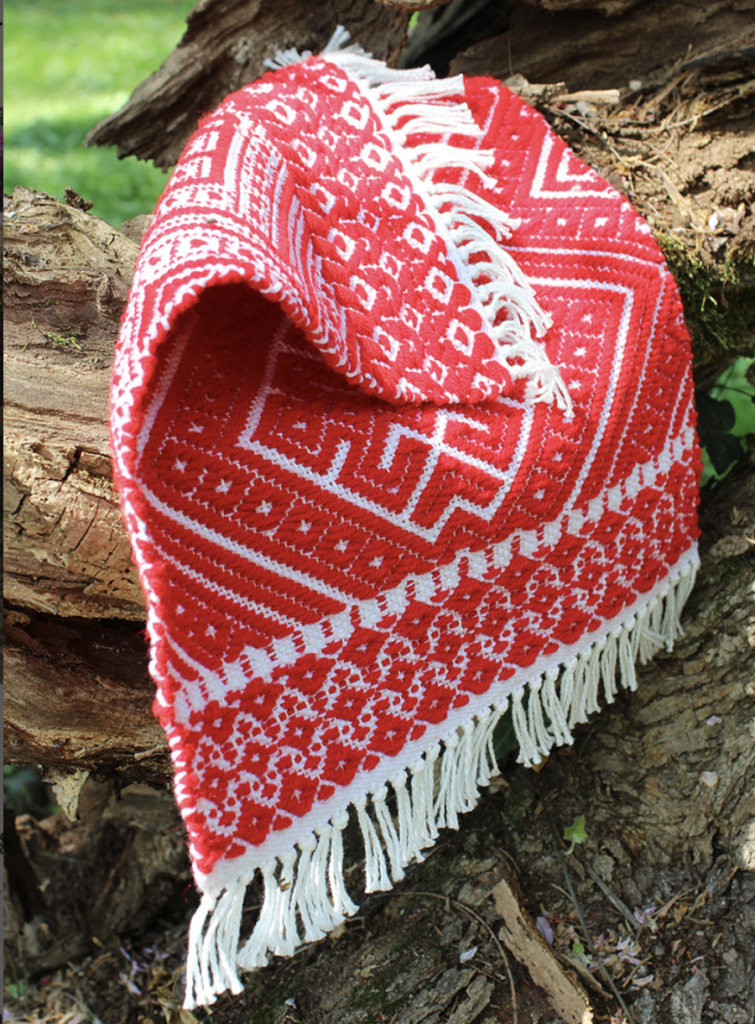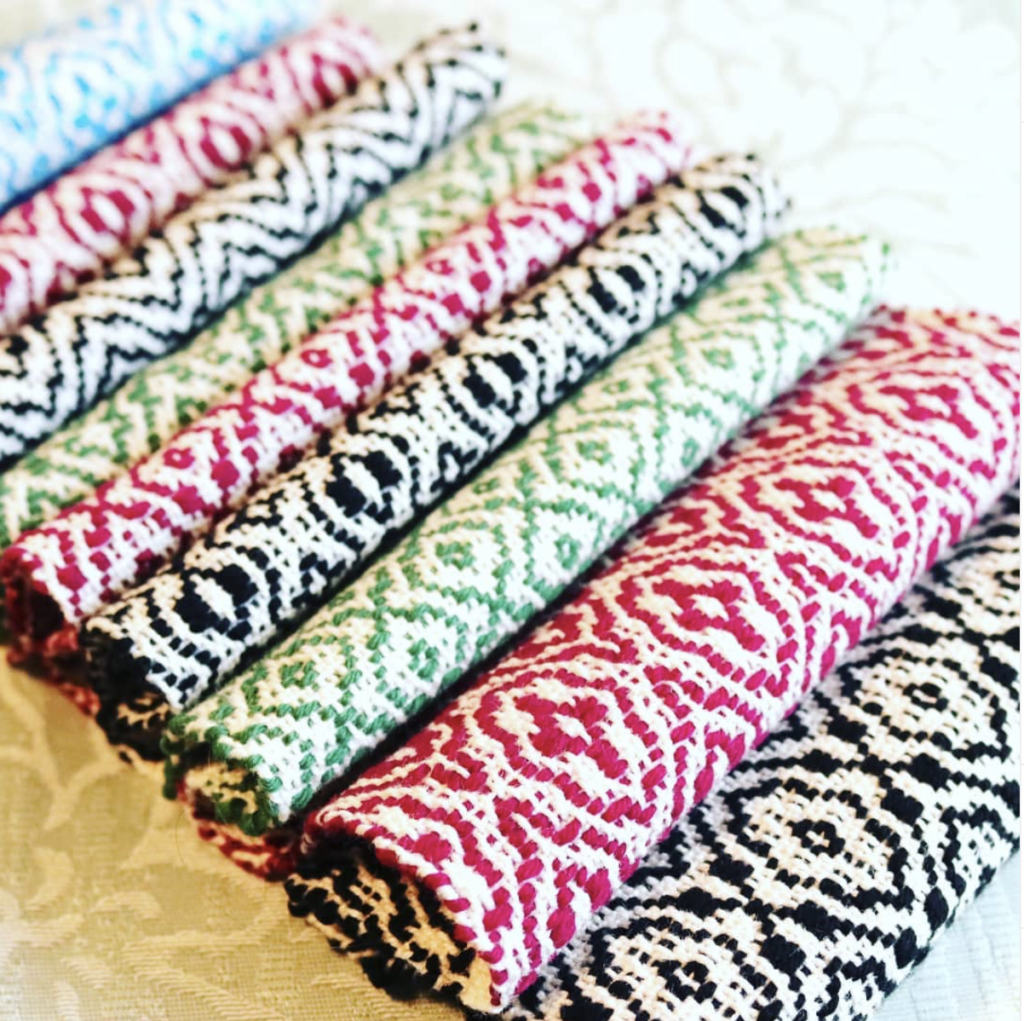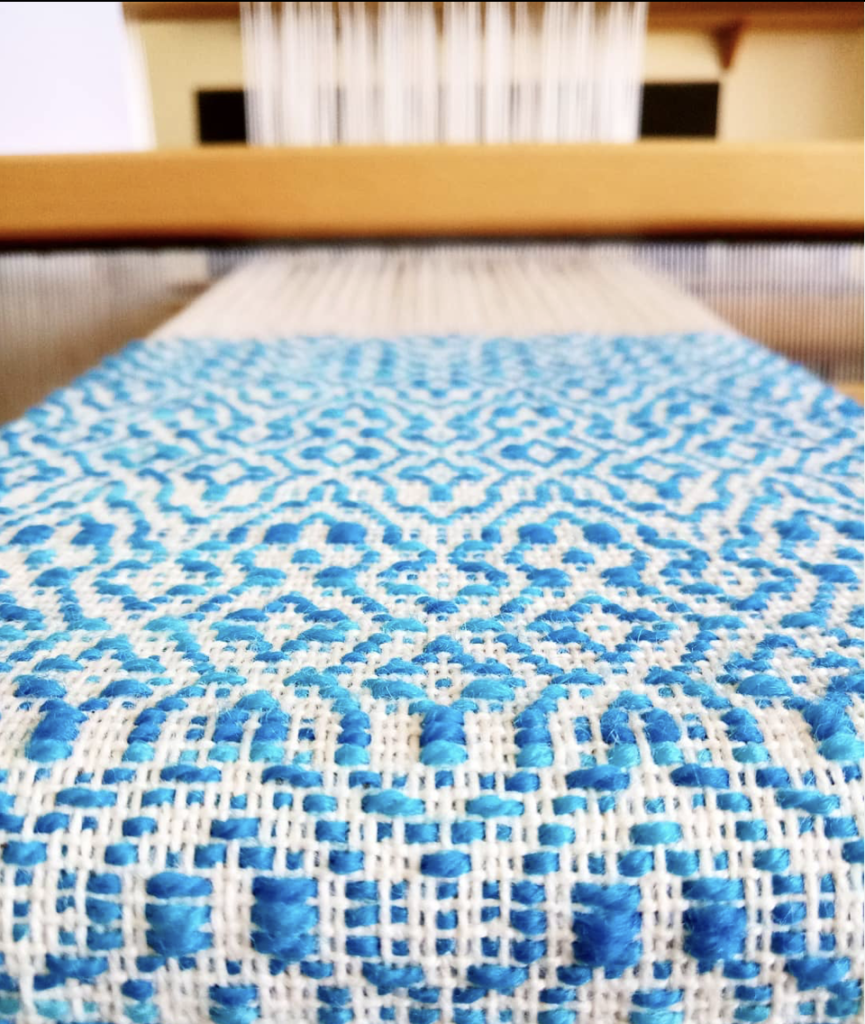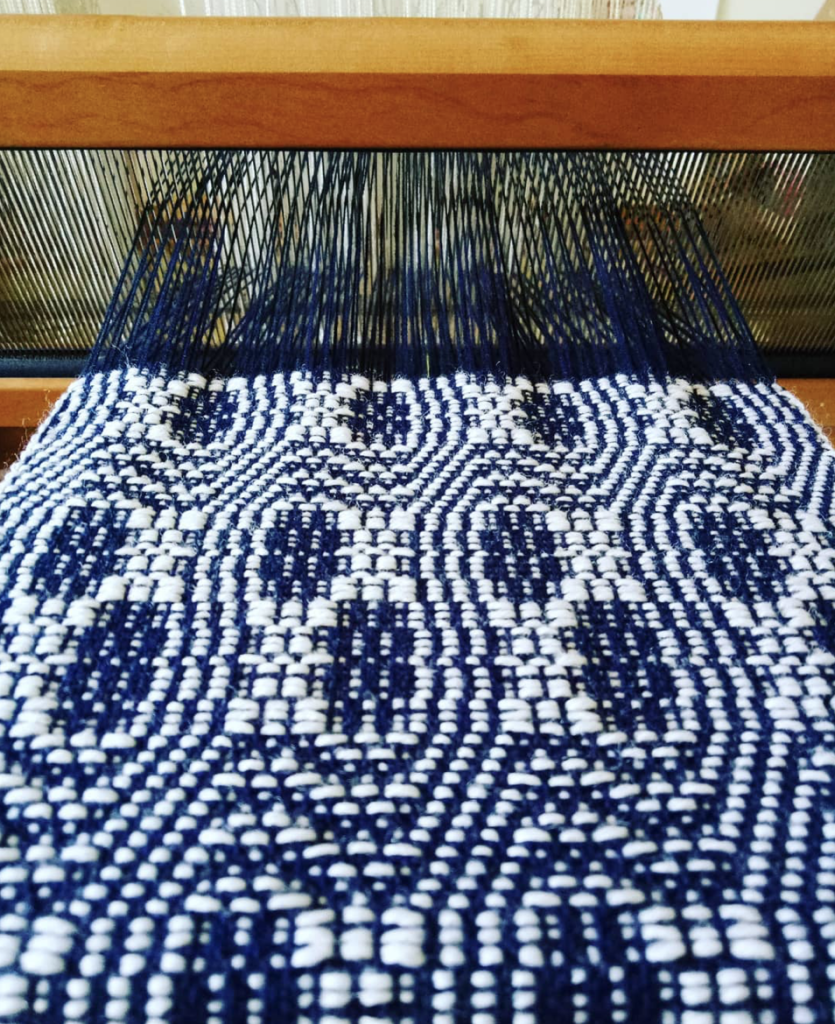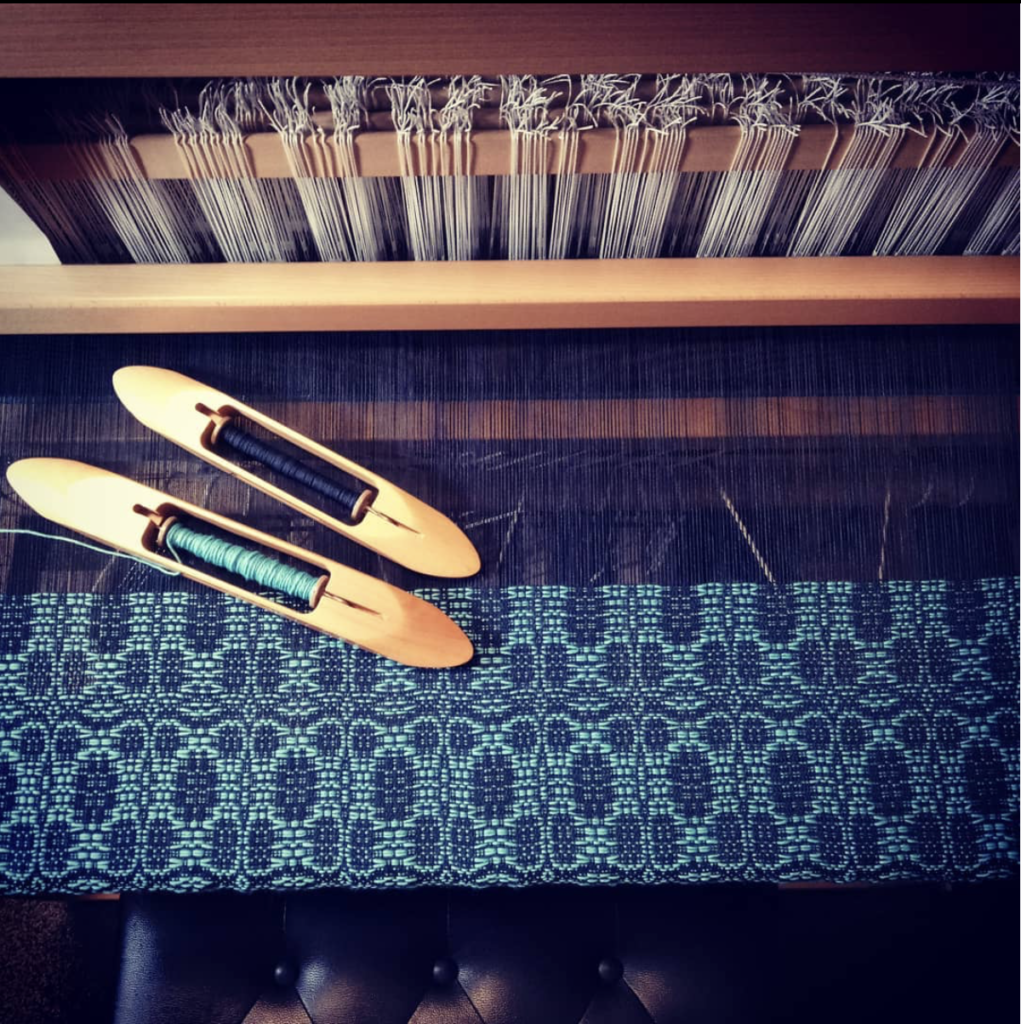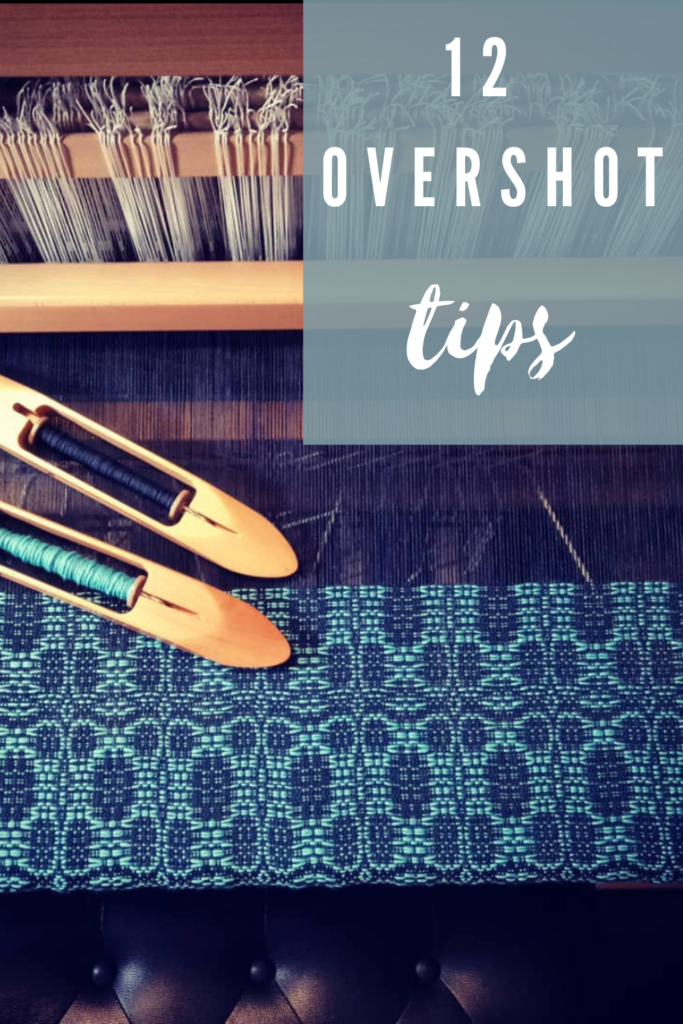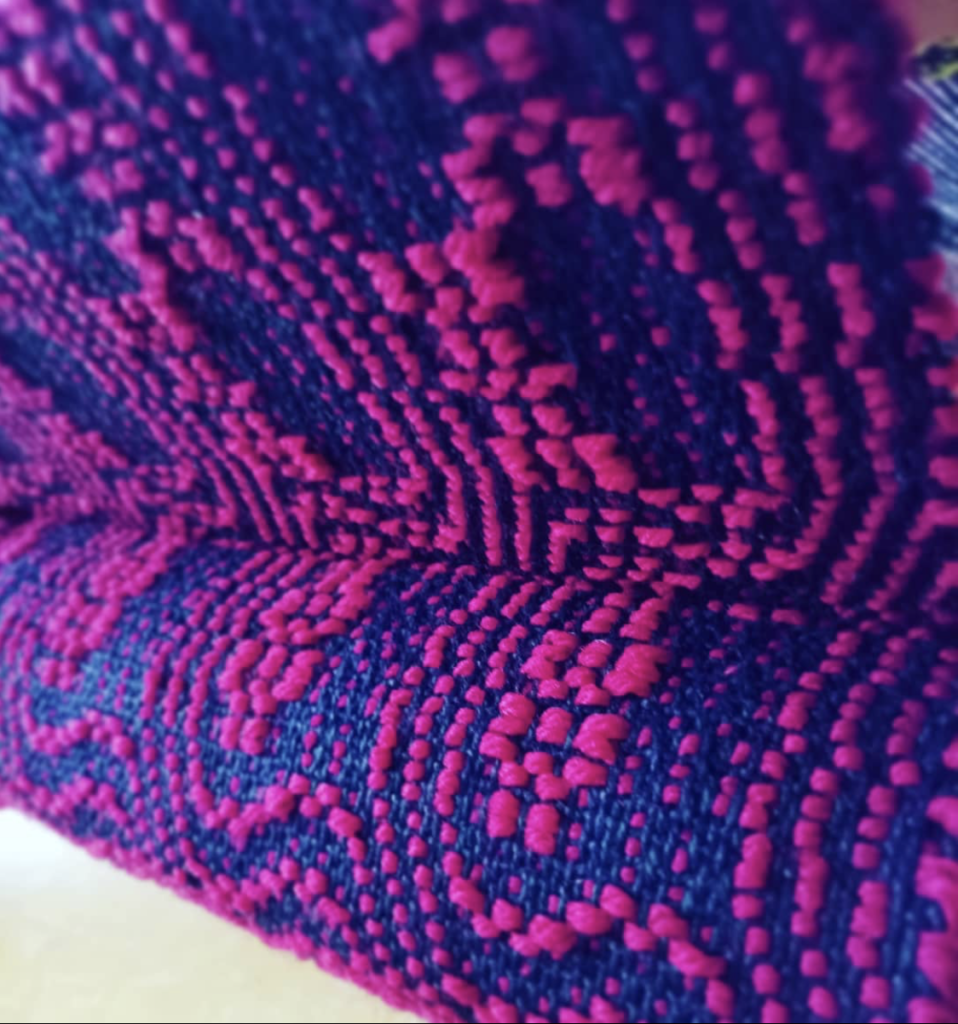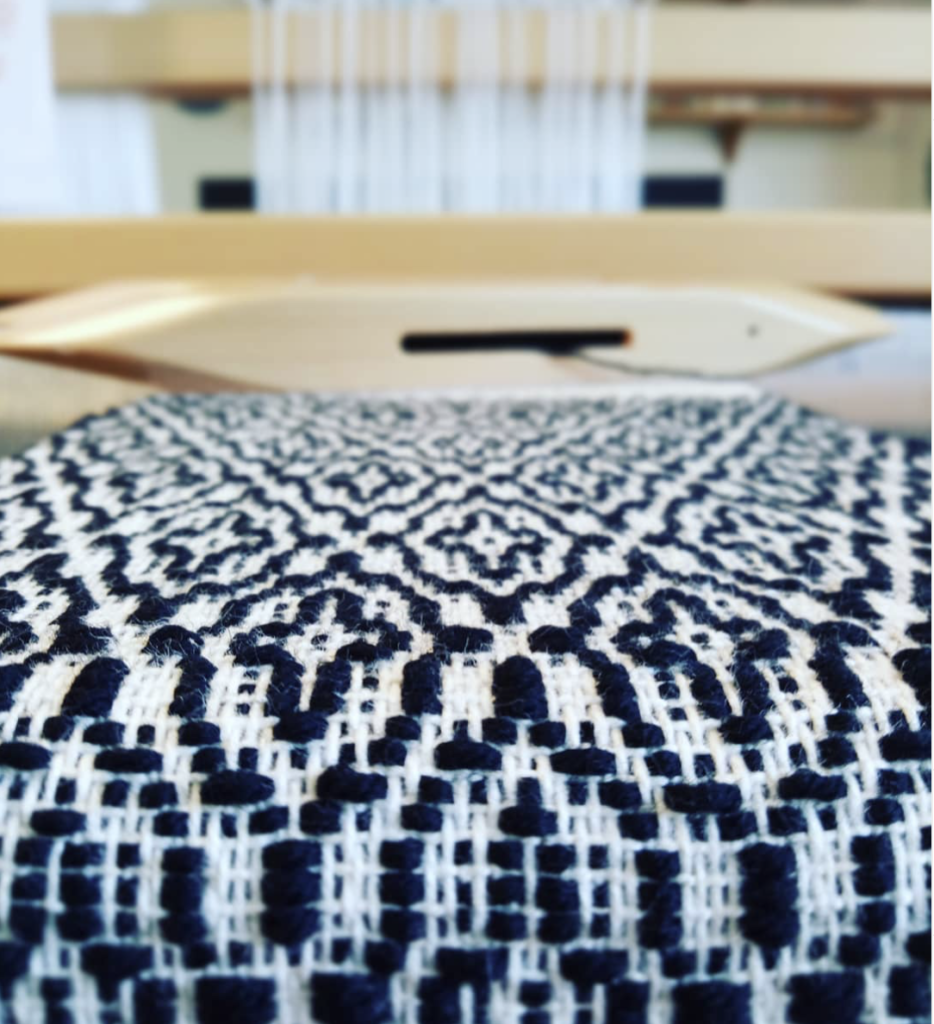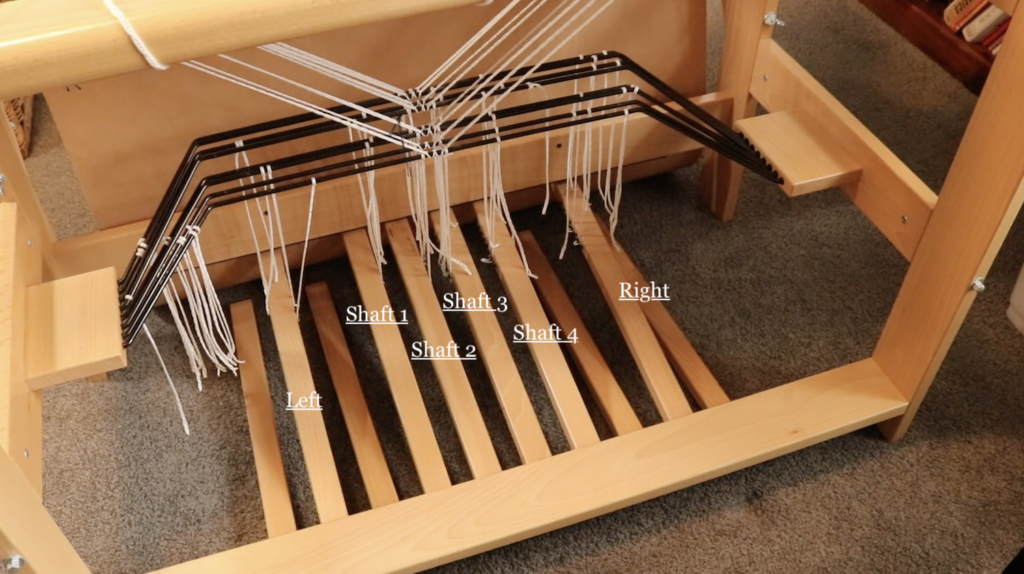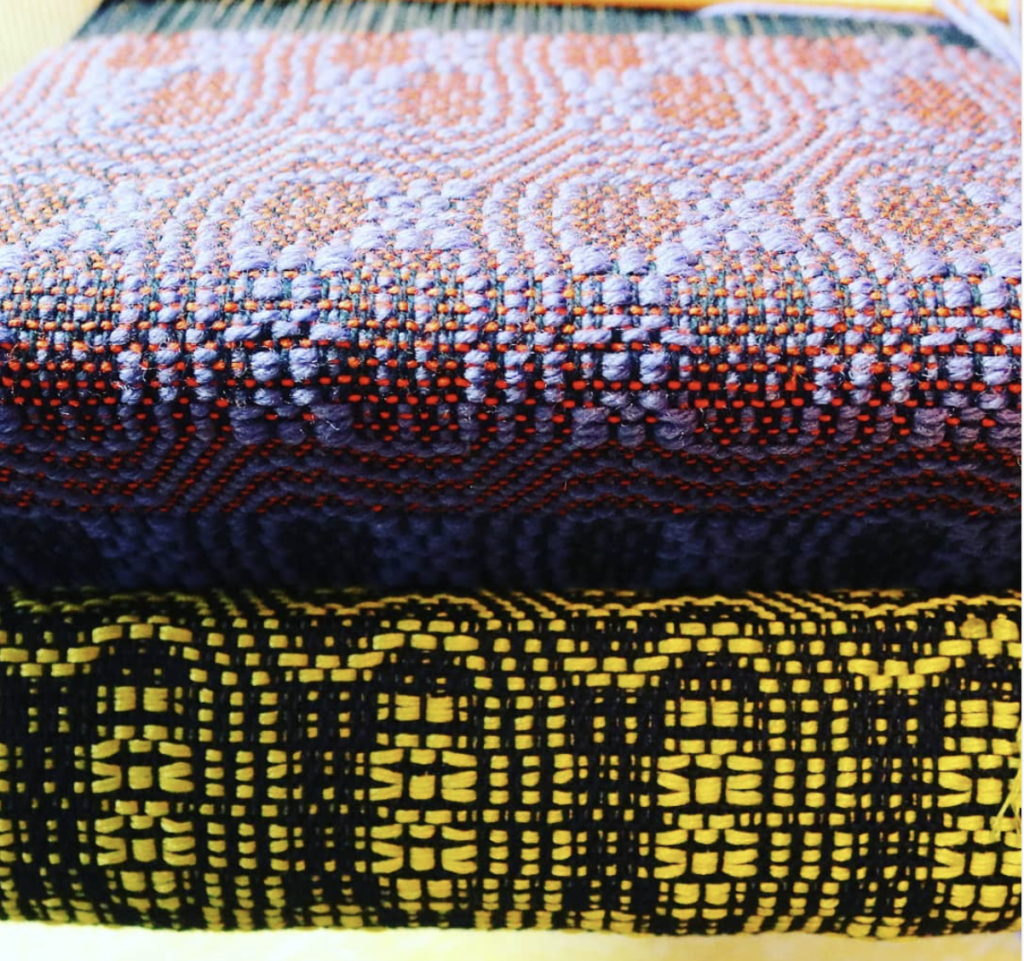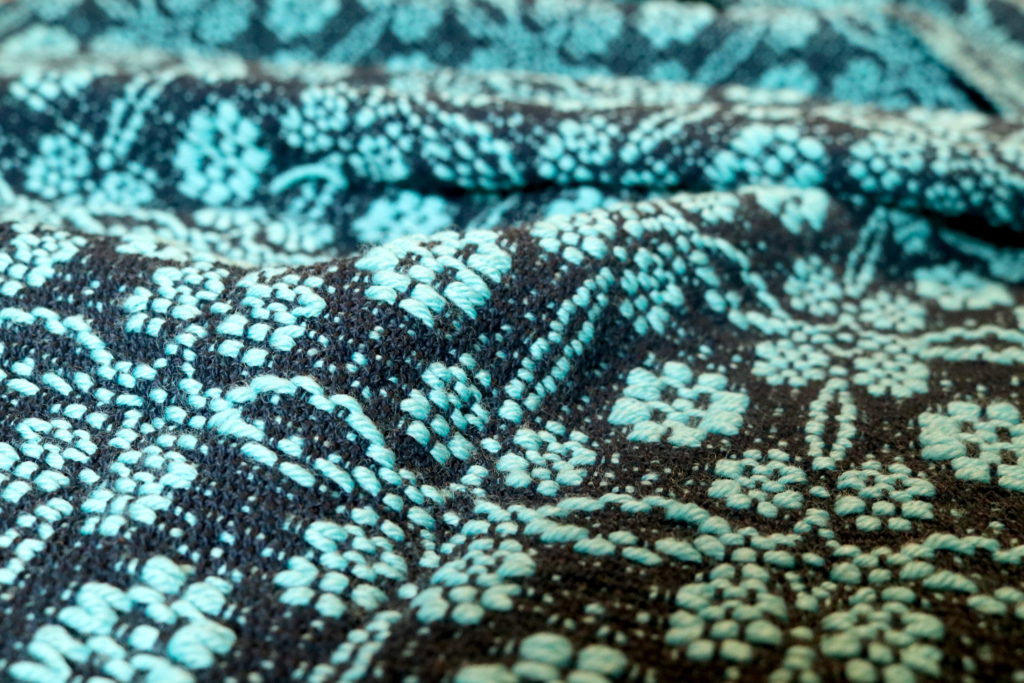I started my latest project full of enthusiasm and confidence.
I often feel at the beginning that whatever I’m working on is going to be my best piece yet. This is an important motivating tool for me and I’m sure that many of the projects I’ve undertaken would not have come to life without this initial confidence.
You could say that I felt super confident going into this new project. Experience with the weave structure? Check! Experience with the yarns? Check! Experience with the loom? Check, check, check!!
- This post contains affiliate links. For further information, please see my disclosure policy.
I thought I was cool with the long and wide warp. First mistake!
I should have asked someone to hold the warp for me so I could focus on winding it on. But no, being the “independent to my own detriment” kind of person that I am, I forged ahead alone.
Let me share some more details about this project. Those of you who have been around here for a while will be familiar with my bordering on obsessive desire to weave a full sized overshot coverlet, heavily influenced by the early American Woven Coverlets.
My main stumbling point to weaving my own coverlet is the seaming. Traditional coverlets were woven in panels, usually 2 or 3, then joined. Most looms were not wide enough for the full piece, and my 90cm width Louet David is no different.
The threading for the panels has to be arranged to be able to match up when the seams are joined. This usually consists of a centre panel and 2 panels either side (if weaving 3 panels). Then the seaming method has to be chosen with the view of minimising visibility – a really good coverlet weaver will have almost invisible seams.
Another essential aspect of successfully seaming the panels is to ensure a very consistent beat so that the pattern woven is continuous once the panels are joined. That means measuring picks per inch, something I’m not particularly fond of doing.
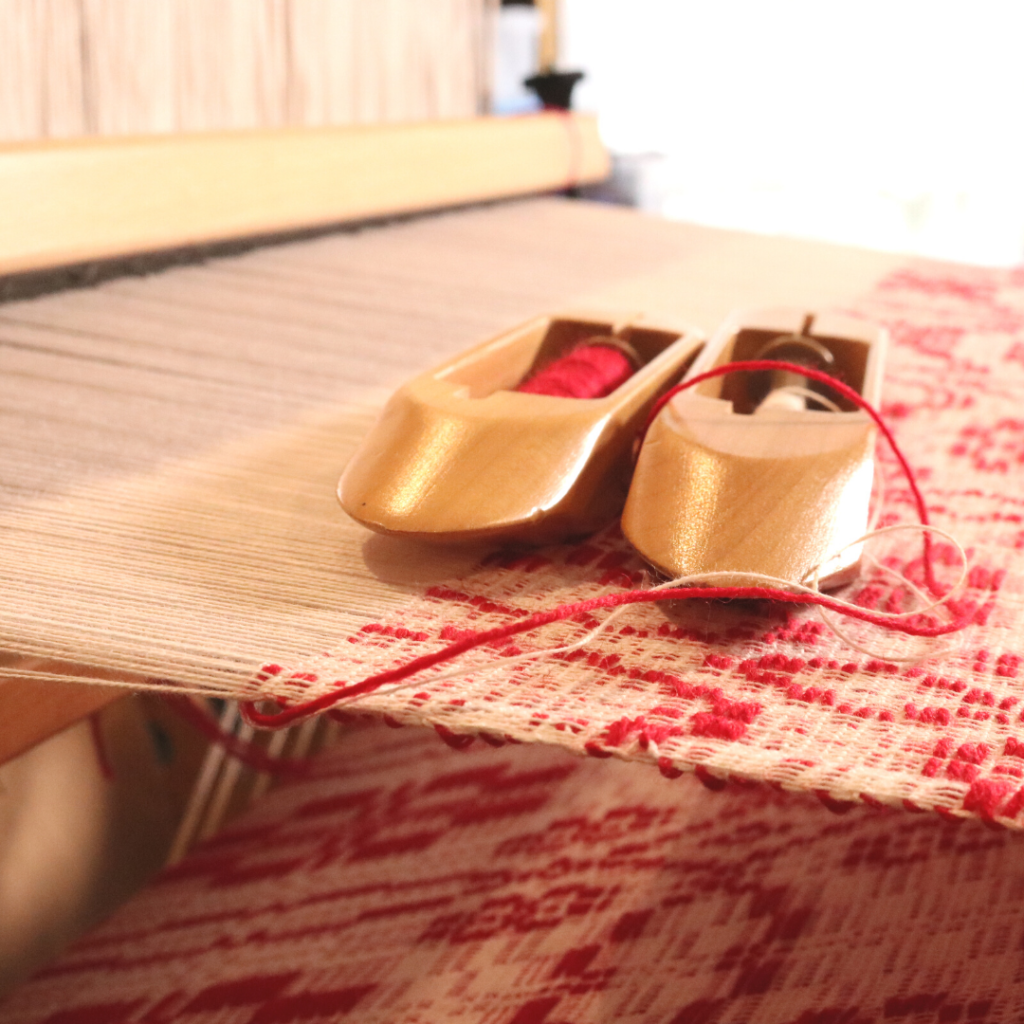
So, my idea was to weave just one panel and to practice rearranging threading and weaving a pleasing pattern. I even had the thought initially that I could use the panel to cut into pieces and make a patchwork quilt. I’m not sure the pattern lends itself well to a quilt, but I’m not too fussed about that. I will decide what to do with the piece once it’s off the loom.
For my warp I chose 8/2 cotton in white. I have a lot of experience with this yarn and have used it extensively in other overshot projects. Normally I pair it with a fingering weight wool for the pattern weft, but this time I decided to try Australian 3ply, which is in between a lace weight and fingering weight. In retrospect, I would have been better to sett a little closer than the 20 ends per inch I chose. There is more space between pattern wefts than I would like.
I found the weaving draft in Carol Strickler’s book “American Woven Coverlets”. I made some adjustments to the draft with plenty of calculations. Yet, when it came to the threading, I found that my warp was 16 threads short! I measured out the extra threads and weighted them over the back of the loom.
After threading and sleying the 650 ends I was looking forward to weaving! But my less than ideally tensioned warp came back to bite me at this point. I had to take the initial weaving very slowly to avoid floats and boat shuttle warp dives.
Initially I felt quite angry about all this. The project was meant to be a happy and relaxing experience. It was supposed to help me progress in my coverlet ambitions.
As I sat there weaving today, I started to think. The anger had subsided to disappointment, and that put me in a reflective mood.
There are so many life lessons in weaving. Challenges, frustrations are all part of the process.
I wanted to share some of my reflections from working on this piece.
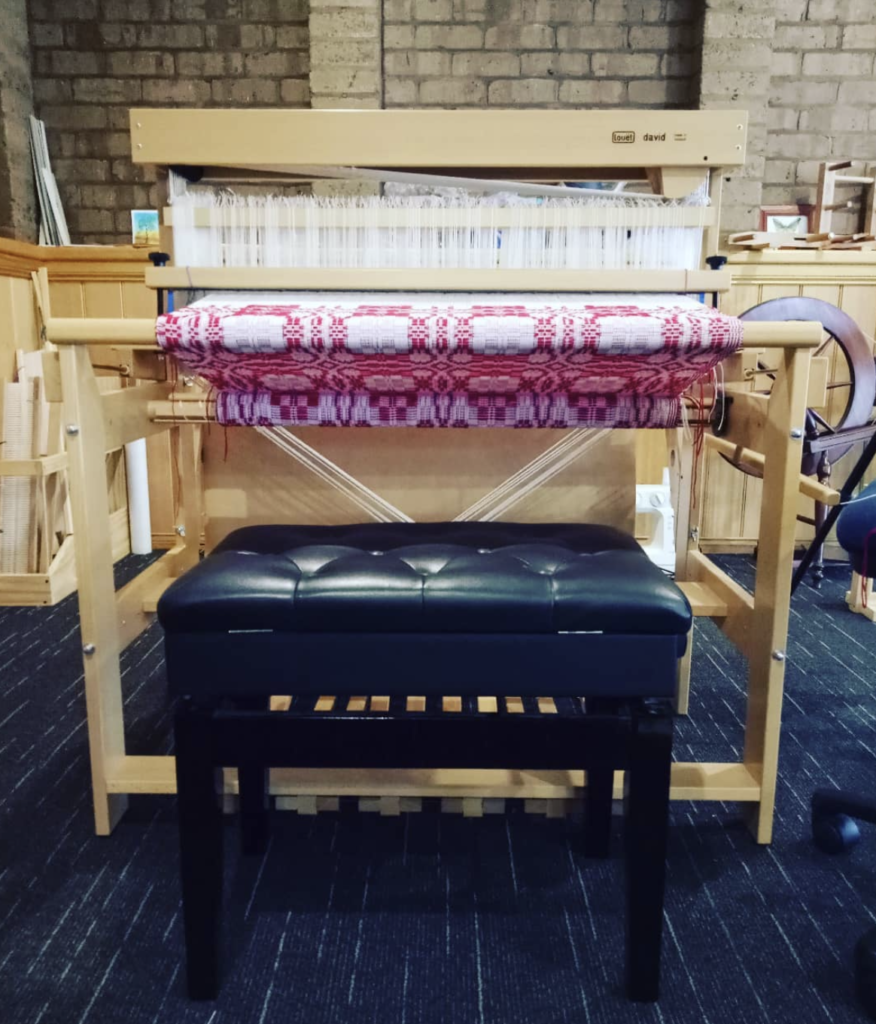
Lesson 1 – Things don’t always go according to plan and that’s OK
I once heard someone say “you expected ABC and you got XYZ”. I expected this to be a fun, rewarding project, but it was harder than I thought. It’s my reaction to the unfulfilled expectations that matters. The problem is not the problem, the problem is how I deal with the problem!
You’ve probably heard me say before that there is no perfection in this world. That doesn’t mean that we shouldn’t strive for high standards and excellence, it just means that we should have more hope than we do expectation.
Lesson 2 – Accepting responsibility
My first reaction was to lay blame elsewhere or make excuses. I was tired, I was rushed, I didn’t want to bother one of my family members to help me, I thought I’d be fine to do it myself. While there may be some truth to some of these elements, ultimately it is my project and my decision making lead to a warp that wasn’t adequately tensioned and is now causing me more difficulties in the weaving process.
I have to accept that responsibility and work to overcome and undo the problems that I made.
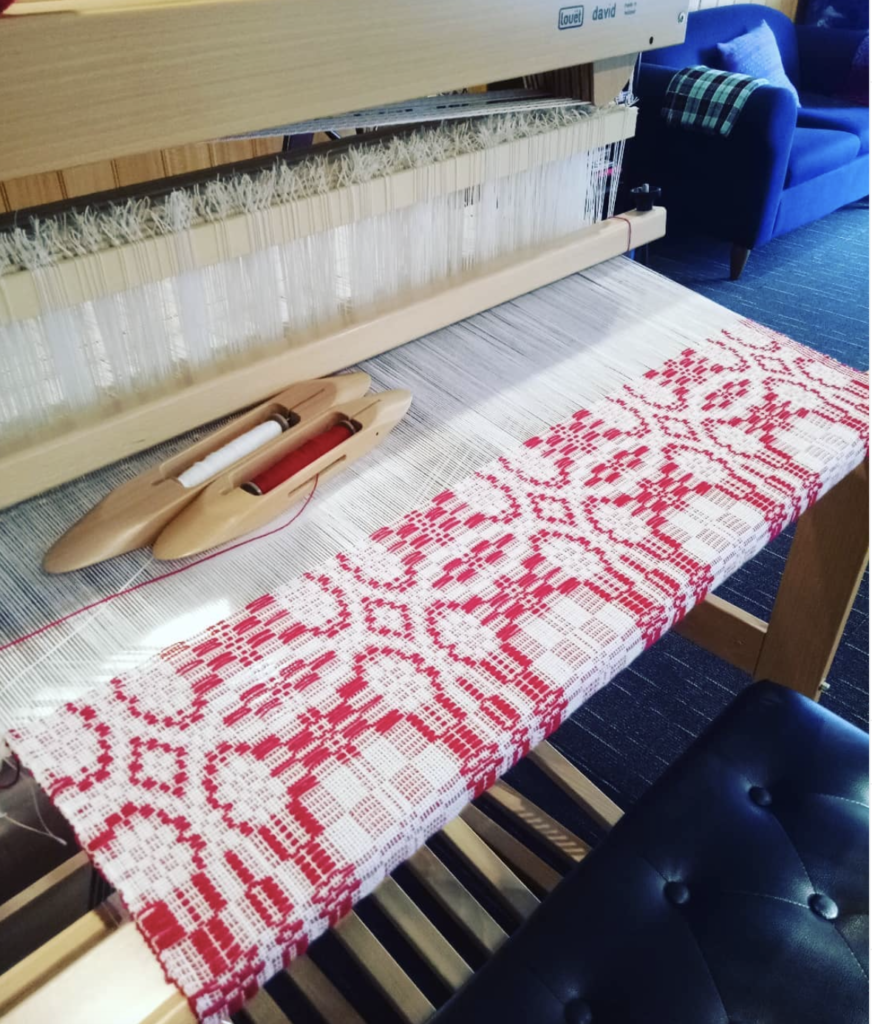
Lesson 3 – Patience and persistence pay off
I could have given up on this warp. But aside from not wanting to waste all that beautiful cotton that I had paid for, I also didn’t want to let the project defeat me. I know from past experience that if I give up on a project I will feel far worse than if I decide to battle through it.
I guess I have a bit of a stubborn streak, but in weaving that works for, rather than against me. Because it forces me to do uncomfortable things. Things that make me angry and frustrated. If I stop at the angry stage, then I’m suspended in that anger and negativity. If I keep going, I’m forced to work through the frustration and come out the other side, much happier and with a sense of satisfaction that even though it was hard, I did it.
Beautiful things are such a treasure that they should take time and shouldn’t necessarily be easy to achieve. They are worth the time and the effort.
Lesson 4 – Learning is a journey
Learning to weave is a journey of stepping stones, walking, then running, but never stopping and sitting down. The journey is every changing and building. Just as life is a constant striving to be better that doesn’t finish. You don’t just wake up one day and say “now I’m the person I should be”. You wake up and prepare to work and practice all the good things you know will make you better. And you repeat that each and every day, building, changing and adapting.
There may be a tendency in weaving to feel like you should know more by now, you should be producing perfect pieces by now. Instead, try to recognise and enjoy the journey and keep building everyday. I’ve talked about Slow Learning before, you can check out this video to learn more-
Lesson 5 – Adversity is good for us
This is one of those hard life lessons and not one that everyone will agree with me on. But if we spend our whole lives being pampered, having it easy and getting what we want, when we want it, we become soft and spoiled.
Difficulties help us to build character. They allow us to develop empathy. They make us strong. We don’t like hardship, because it doesn’t feel good – but that doesn’t mean it isn’t good for us.
This challenging project has certainly been good for me. Right now, I’m at a better place with it, slowly weaving (slower than I would like, but that’s just how it is) and making adjustments as I go. I feel at peace with my progress. I’ve gained confidence that I can deal with pretty much anything my loom throws at me.
I would still rather that this was the easy and enjoyable project that I originally envisioned, but I’ve shifted to a place of gratitude.
I am grateful that:
- I have a loom and can use it
- I have supplies to weave with
- I can figure out how to fix things when I need to
- I have the time to devote to this wonderful craft
- Most of the time, I end up with a beautiful piece of weaving
And lastly, that I learn so much more from weaving than just how to weave.
If you would like to see this post in video format (and see me weaving the project itself!) please click on the video below.
Now it’s over to you. What life lessons have you learned from weaving?
Please share your thoughts or comments down below, I love to hear from you!
Until next time…
Happy Weaving!


